Abstract
The purpose of this qualitative study was to examine user acceptance of a clinical computer system in two pediatric practices in the southeast. Data were gathered through interviews with practice and IS staff, observations in the clinical area, and review of system implementation records. Five months after implementation, Practice A continued to use the system but Practice B had quit using it because it was unacceptable to the users. The results are presented here, in relation to a conceptual framework, which was originally developed to describe the process of successful implementation of research findings into practice. Five main themes were identified relative to the differences in user acceptance at the two practices: 1) Benefits versus expense of system use varied, 2) Organizational cultures differed, 3) IS staff's relationship with practices differed, 4) Post-implementation experiences differed, and 5) Transfer of technology from the academic center to private practice proved challenging in Practice B. The findings indicate a need for the development and validation of tools to measure healthcare organizational climate and readiness for change.
Full text
PDF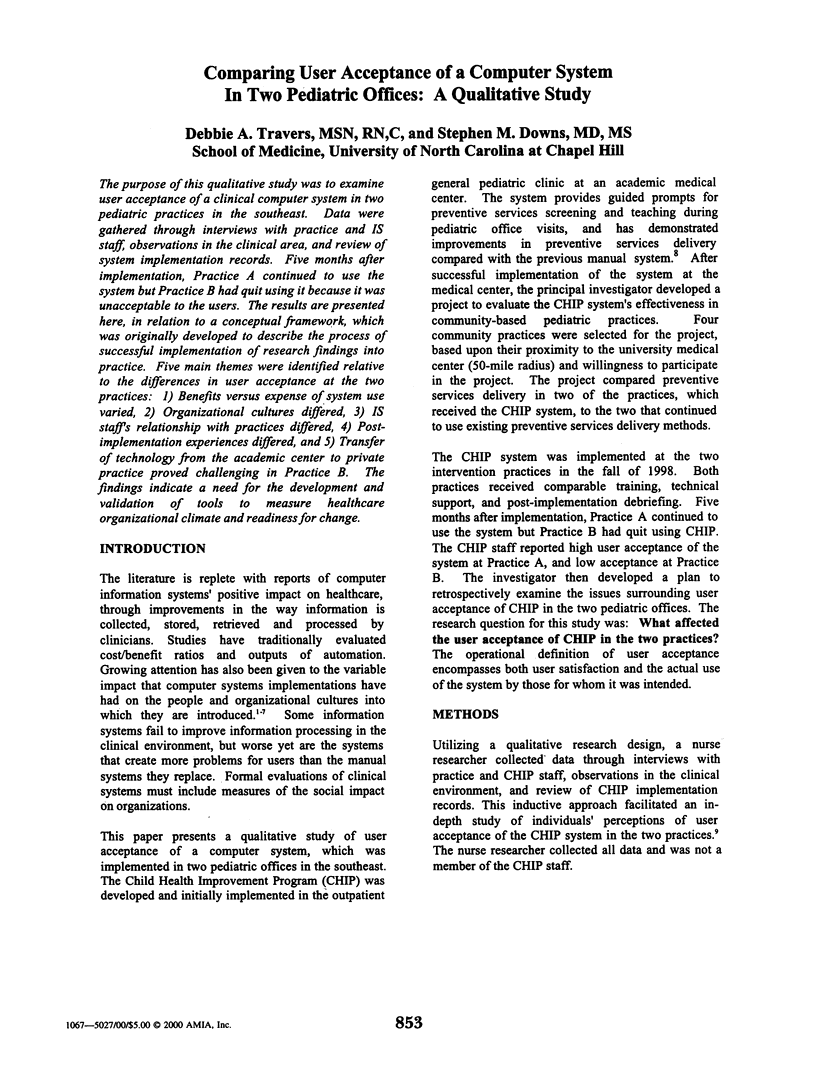
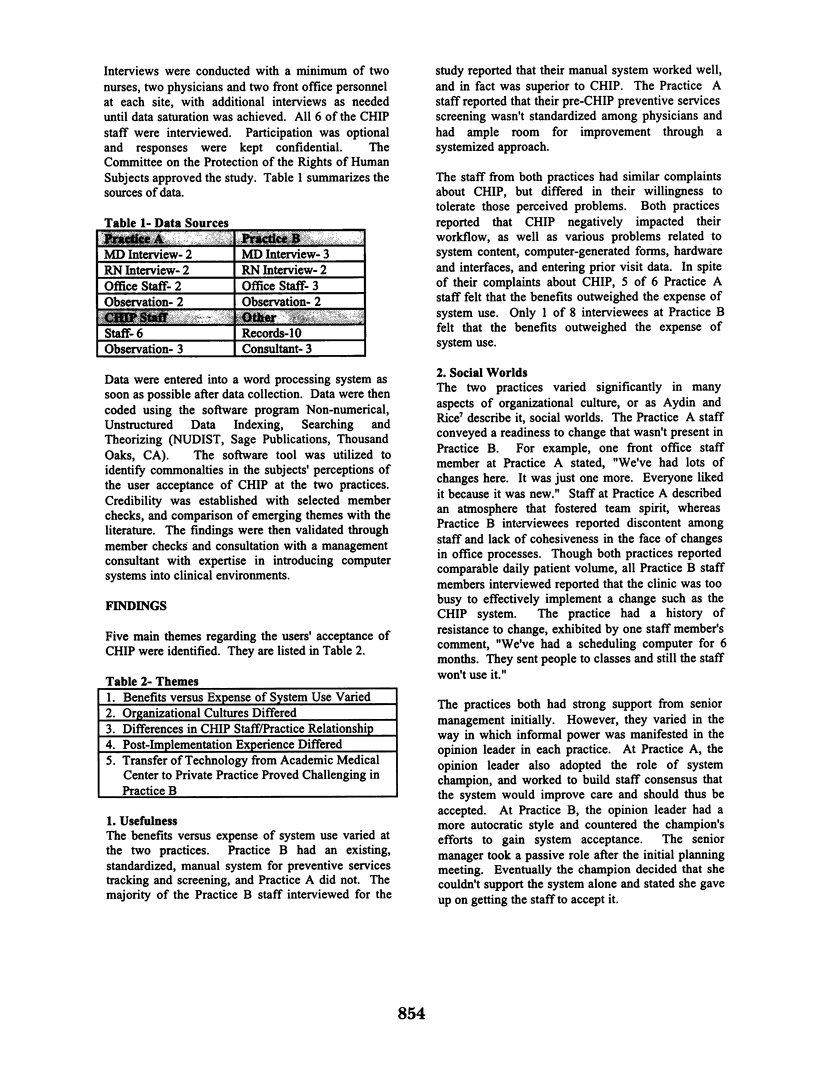
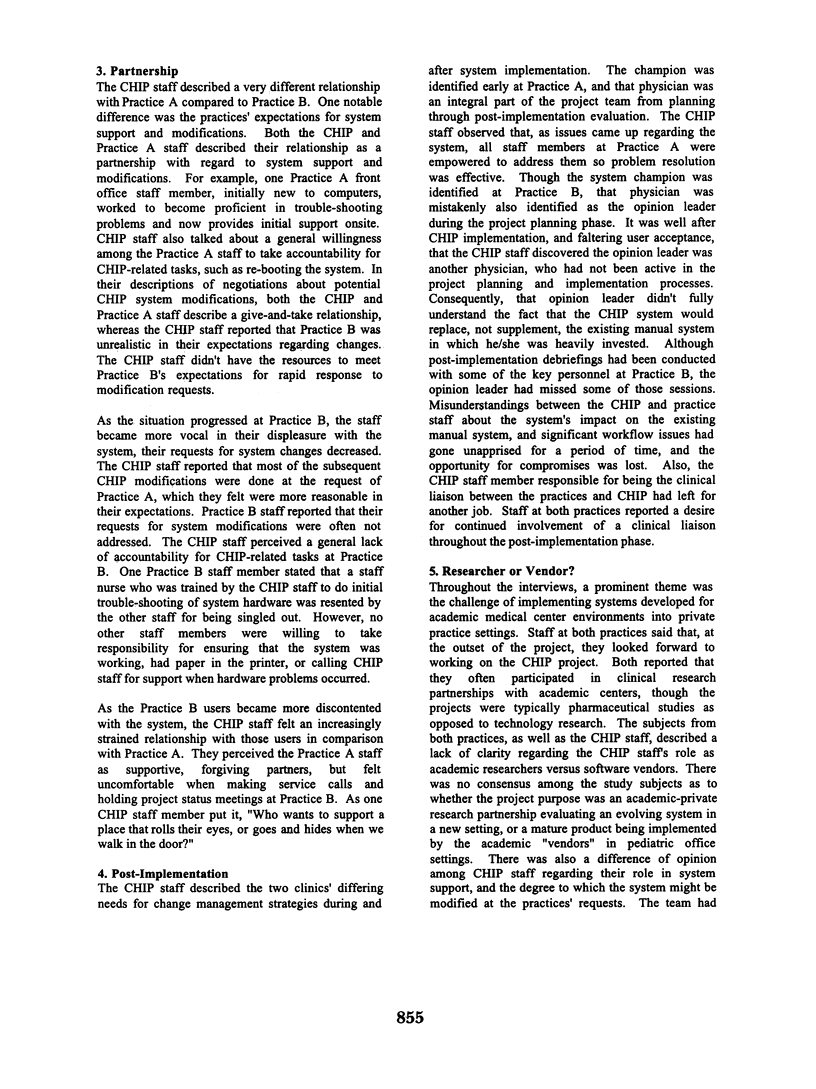
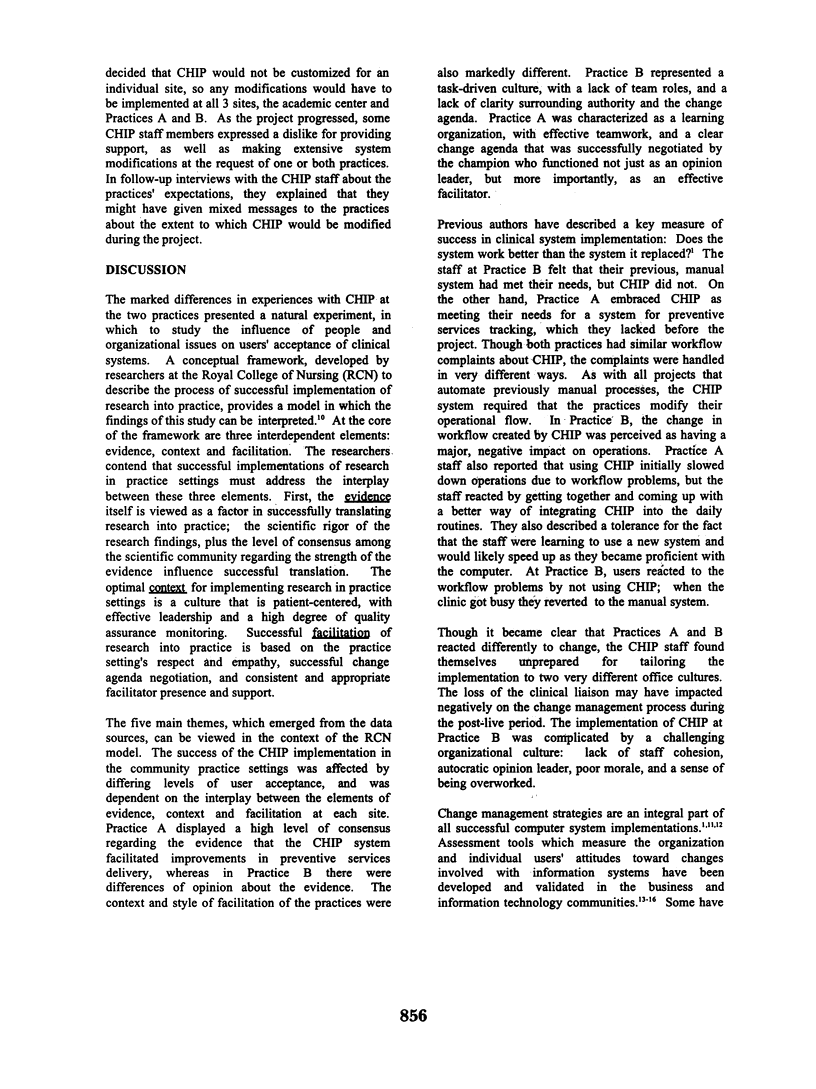
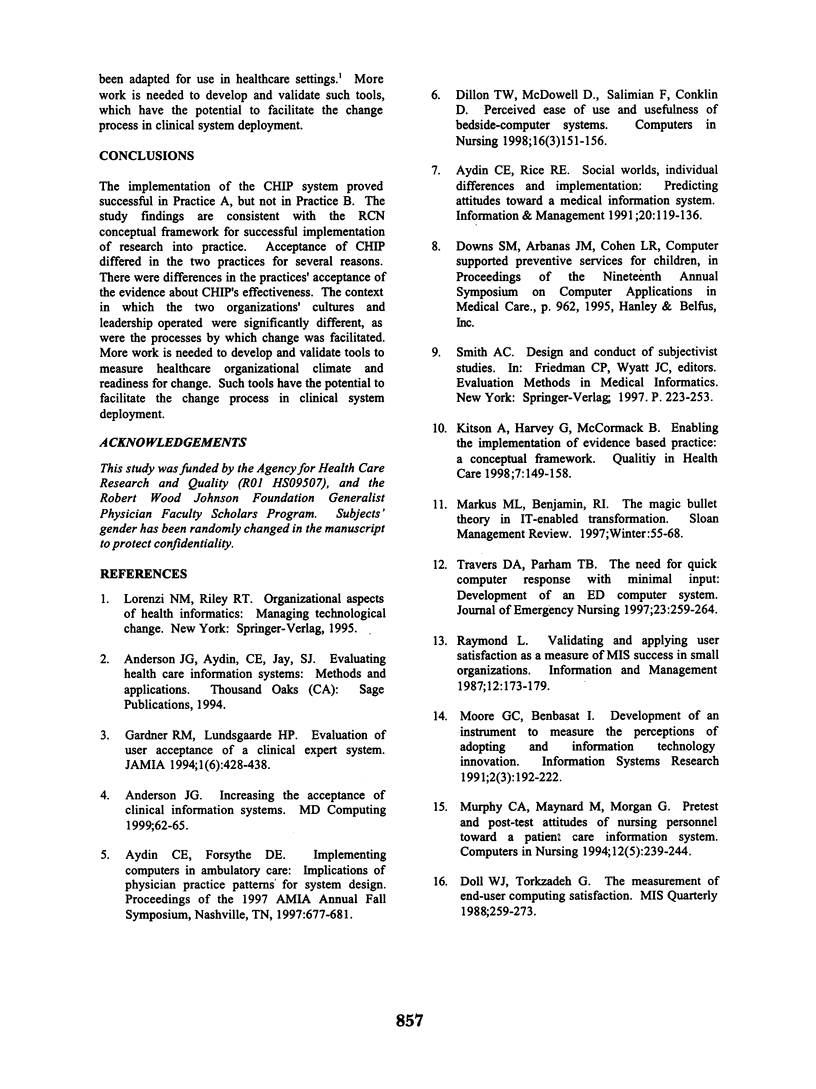
Selected References
These references are in PubMed. This may not be the complete list of references from this article.
- Aydin C. E., Forsythe D. E. Implementing computers in ambulatory care: implications of physician practice patterns for system design. Proc AMIA Annu Fall Symp. 1997:677–681. [PMC free article] [PubMed] [Google Scholar]
- Dillon T. W., McDowell D., Salimian F., Conklin D. Perceived ease of use and usefulness of bedside-computer systems. Comput Nurs. 1998 May-Jun;16(3):151–156. [PubMed] [Google Scholar]
- Gardner R. M., Lundsgaarde H. P. Evaluation of user acceptance of a clinical expert system. J Am Med Inform Assoc. 1994 Nov-Dec;1(6):428–438. doi: 10.1136/jamia.1994.95153432. [DOI] [PMC free article] [PubMed] [Google Scholar]
- Kitson A., Harvey G., McCormack B. Enabling the implementation of evidence based practice: a conceptual framework. Qual Health Care. 1998 Sep;7(3):149–158. doi: 10.1136/qshc.7.3.149. [DOI] [PMC free article] [PubMed] [Google Scholar]
- Murphy C. A., Maynard M., Morgan G. Pretest and post-test attitudes of nursing personnel toward a patient care information system. Comput Nurs. 1994 Sep-Oct;12(5):239–244. [PubMed] [Google Scholar]
- Travers D. The need for quick computer response with minimal input: development of an ED computer system. J Emerg Nurs. 1997 Jun;23(3):259–264. doi: 10.1016/s0099-1767(97)90025-8. [DOI] [PubMed] [Google Scholar]


